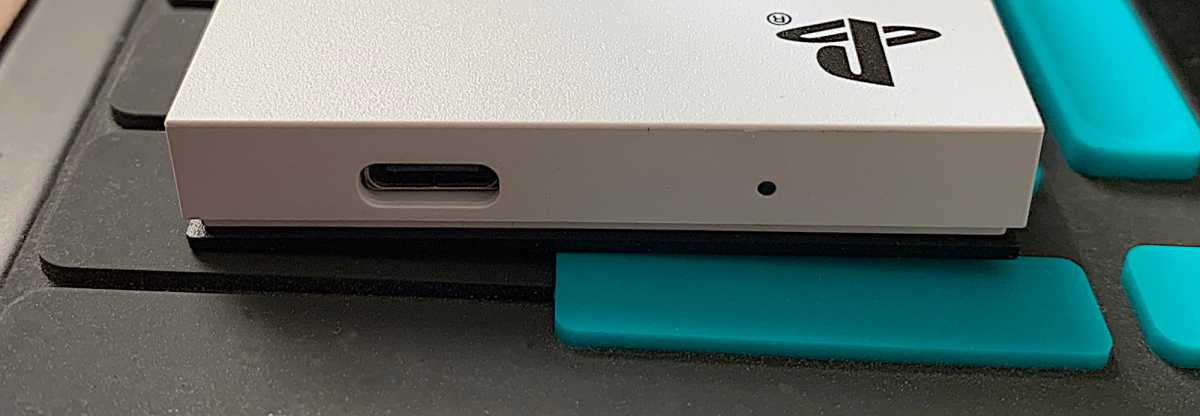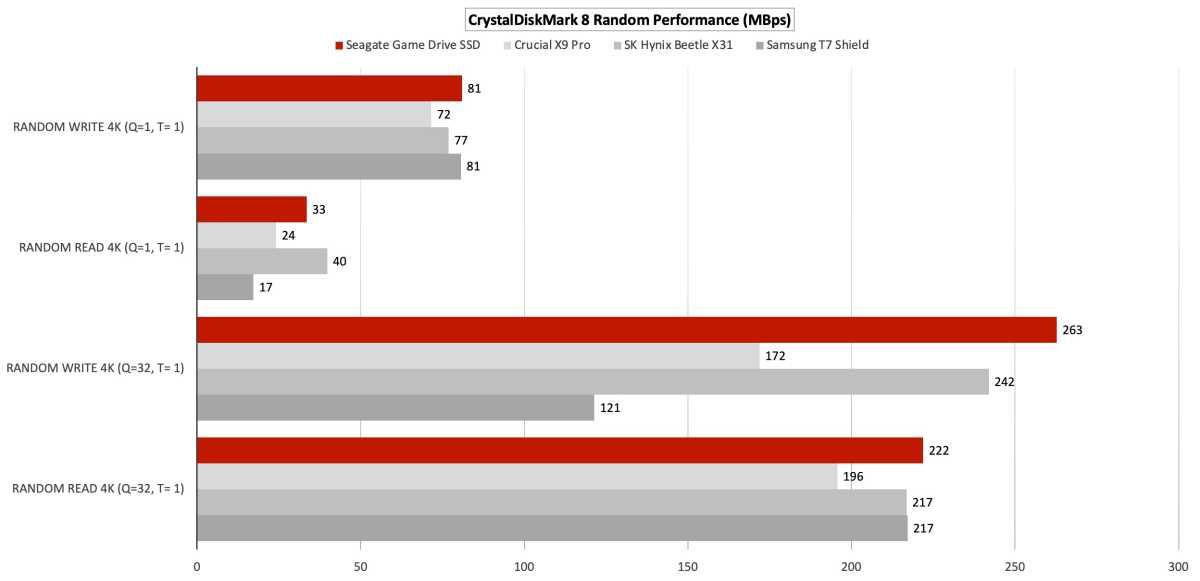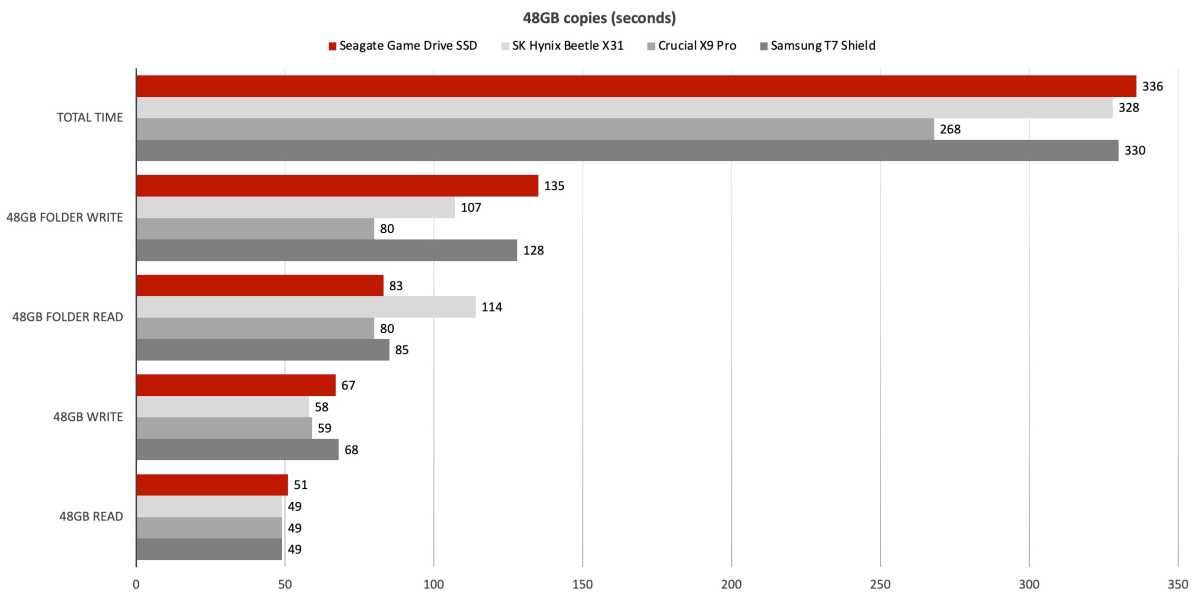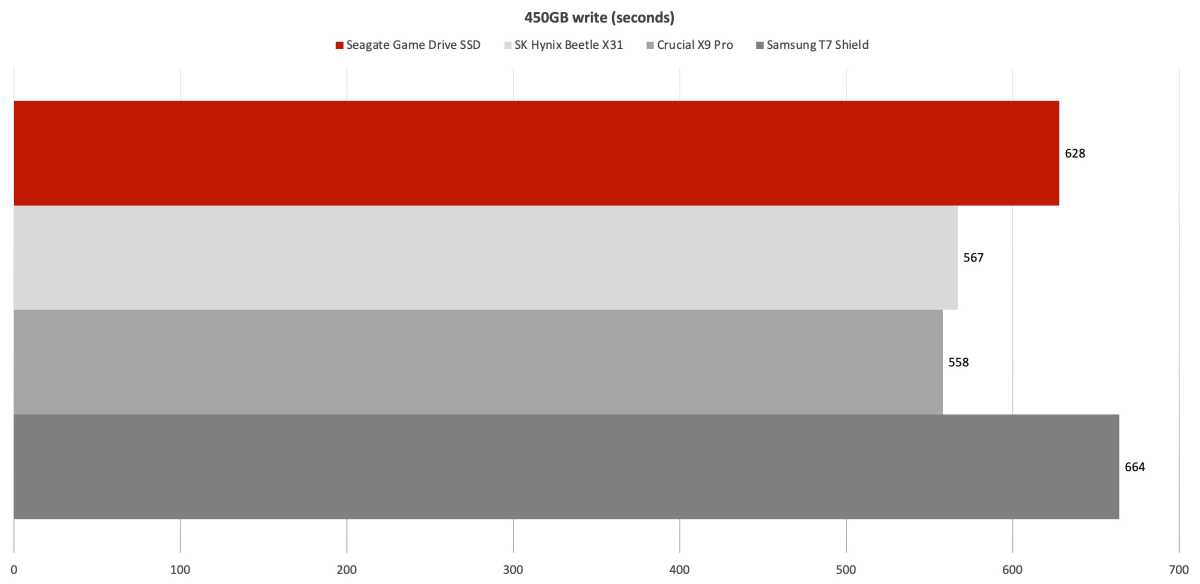Seagate Game Drive SSD review: Classy, fast PlayStation-themed storage (original) (raw)
At a glance
Expert's Rating
Pros
- Super-attractive styling and lighting
- Good 10Gbps performance
- Playstation logo
Cons
- Only 10Gbps
- Expensive
Our Verdict
The Seagate Game Drive SSD is attractively styled to match the PS4/PS5. It’s also a very good performer, though you pay Considerably for the looks and speed.
Price When Reviewed
This value will show the geolocated pricing text for product undefined
Best Pricing Today

Price When Reviewed
1TB: 130I2TB:130 I 2TB: 130I2TB:220
Best Prices Today: Seagate Game Drive SSD

Seagate theming its external storage devices must pay dividends at the sales counter as the company shows no sign of slacking off the practice. Its latest effort, the Game Drive SSD, is styled to match Sony’s Playstations — logo and all. The drive is also fast, if a bit pricey.
What are the Seagate Game Drive SSD’s features?
The Seagate Game Drive SSD is a 10Gbps USB external SSD, hued and styled to match Sony’s Playstation consoles. It measures around 2.2-inches wide, by 4.13-inches long, by 0.43-inches thick and weighs a mere 2.5 ounces.
The end of the drive with the Playstation logo (it’s officially licensed, if you care) features the Type-C port and the activity light (it’s very subtle in its variance). On the other end with the Seagate name there’s a stylish Playstation-like blue LED bar (see the main photo).

In total, the appearance is very PS4/5 like, and to my mind, very attractive.
Seagate warranties the Game Drive SSD for three years, but there was no mention of a TBW rating (terabytes that may be written). TBW generally mitigates the warranty as miles do on an auto warranty, but there’s little chance of wearing out any SSD within the warranty period.
Note that TBW is a write endurance rating. Occasionally we hear from someone that asks if reaching this limit incapacitates the drive. It doesn’t. You can still read from it, you just can’t write to it. In other words, the data on it is still safe, you just can’t add any.
Further reading: See our roundup of the best external drives to learn about competing products.
How much does the Seagate Game Drive SSD cost?
The Game Drive External SSD ships in 1TB/$130 and 2TB/$220 flavors. That’s definitely on the pricey side, so you’re paying quite a bit for the styling. You’ll have to decide if the drive’s appearance is worth the extra dough, but it’s a looker for sure.
How fast is the Seagate Game Drive SSD?
The Seagate Game Drive SSD (2TB) proved the 5th fastest of the 17 10Gbs USB SSDs I’ve tested to date. It’s fast for its ilk and 10Gbps ports are still far more common than 20Gbps, or USB/Thunderbolt 4. Ergo, it’s fast enough and cheaper than the more recent technologies, if not as much cheaper as I’d like.
It’s a looker for sure.
Note that the Crucial X9 Pro, SK Hynix Beetle X31, and Samsung T7 Shield in the charts are all older models. The Crucial X9 Pro and SK Hynix are also quite a bit cheaper at this point.
The Seagate Game Drive SSD was the fastest under CrystalDiskMark 8 writing with multiple queues of the four drives I tested it against, and not far off in the other tests.

The Seagate Game Drive SSD was the fastest under CrystalDiskMark 8 writing with multiple queues of the four drives and not far off in the other tests. Longer bars are better.
The Seagate Game Drive SSD’s random performance under CrystalDiskMark 8 was outstanding.

The Seagate Game Drive SSD’s random performance under CrystalDiskMark 8 was outstanding. Longer bars are better.
While it couldn’t match the Crucial X9 Pro in 48GB transfers, the Seagate Game Drive SSD was still no slouch.

While it couldn’t match the Cucial X9 Pro with 48GB transfers, the Seagate Game Drive SSD was still no slouch. Shorter bars are better.
It wasn’t a true barn burner writing our single 450GB file — however, the Seagate Game Drive SSD managed an acceptable performance for 10Gbps USB.

It was not a barn burner writing our single 450GB file, however, the Seagate Game Drive SSD was still average for 10Gbps USB. Shorter bars are better.
The Seagate Game Drive SSD wasn’t the fastest 10Gbps USB SSD I’ve tested, but it wasn’t far off. Subjectively, you’d be hard pressed to tell the difference between it and the four 10Gbps drives that placed ahead of it. In other words, performance isn’t a concern.
Should you buy the Seagate Game Drive SSD?
Sure. I’m fairly certain you won’t be disappointed in the Game Drive SSD’s performance or appearance. Of course, if looks and fashion coordination aren’t a concern, you can waltz out of the store with something else for a substantially smaller outlay.
How we test
Drive tests currently utilize Windows 11, 64-bit running on a Z790 (PCIe 4.0/5.0) motherboard/i5-12400 CPU combo with two Kingston Fury 32GB DDR5 4800MHz modules (64GB of memory total). Both 20Gbps USB and Thunderbolt 4 are integrated to the back panel and Intel CPU/GPU graphics are used. The 48GB transfer tests utilize an ImDisk RAM disk taking up 58GB of the 64GB of total memory. The 450GB file is transferred from a 2TB Samsung 990 Pro which also runs the OS.
Each test is performed on a newly NTFS-formatted and TRIM’d drive so the results are optimal. Note that in normal use, as a drive fills up, performance may decrease due to less NAND for secondary caching, as well as other factors. This can be less of a factor with the current crop of SSDs with far faster late-generation NAND.
Caveat: The performance numbers shown apply only to the drive we were shipped and to the capacity tested. SSD performance can and will vary by capacity due to more or fewer chips to shotgun reads/writes across and the amount of NAND available for secondary caching. _Vendors also occasionally swap components. If you ever notice a large discrepancy between the performance you experience and that which w_e report, by all means, let us know.